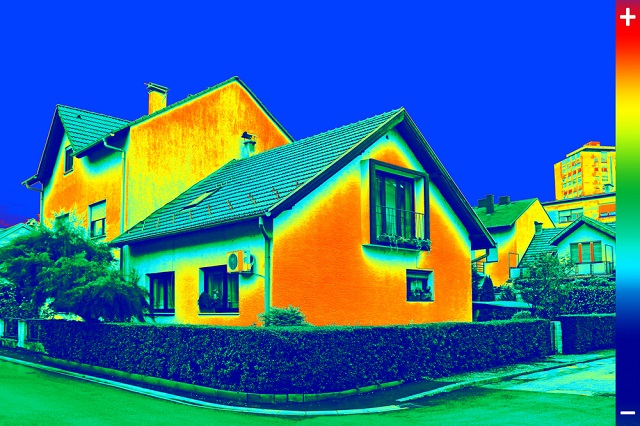A research grant worth $225,000 has been awarded for research into nanowire devices which exploit the pyroelectric effect to generate energy from the heat lost from buildings to the environment.

Ivan Smuk | Shutterstock
The research team at the University of Texas, led by Ankur Jain, aim to build devices that can use the energy transfer that occurs across temperature gradients, such as those between the inside and outside of a building, into electricity.
The pyroelectric effect describes how some materials will generate a voltage upon heating or cooling. If pyroelectric devices were placed in walls heat from central heating systems, that is usually wasted, could be converted into electricty.
There is a lot of heat in our world that goes away untapped and is not converted to energy. For example, many engineering systems experience temperature gradients in time that could be converted to useful electricity. This potentially transformative research will examine pyroelectric effect – the property of certain materials to produce electricity when subjected to a temperature that changes with time at the nano scale.
Toward this, we will examine extremely fast rates of temperature change in nanowires,” Jain said. “We don’t want tens of degrees over a period of hours, but hundreds of degrees over one second.
Ankur Jain - University of Texas
The new microdevice will be able to create a large temperature change using the inegration of many individual nanowires The researchers are hoping to discover the different methods and mechanisms that control this unique process, and to gain better insight into the pyroelectric effect at the nanoscale level.
The aim of the study is to ultimately develop advanced energy-harvesting microdevices that can possibly be used in microprocessors and sensing systems. It is eventually hoped that the devices could be scaled up to increase the efficiency of heating systems.
Khosrow Behbehani, dean of the UTA College of Engineering, highlighted the significance of the NSF grant and how Jain’s project can contribute towards a sustainable environment.
The NSF’s EAGER grants are awarded to researchers with potentially groundbreaking ideas. If successful, Dr. Jain’s work could have a widespread effect on meeting the energy challenge, creating more sustainable urban communities and significantly reducing the global environmental impact of lost energy from our machines and homes.
Khosrow Behbehani - UTA
The Microscale Thermophysics Laboratory at the University of Texas, Arlington is headed by Jain, where he along with his students carries out studies on energy conversion systems, thermal transport, bioheat transfer, semiconductor thermal management, and associated subjects at the microscale level. Jain earned his master’s of science and doctorate degrees from Stanford University.
The NSF, Office of Naval Research, Department of Energy, the UTA Research Enhancement Grant, and Indo-U.S. Science & Technology Forum funded Jain's research.